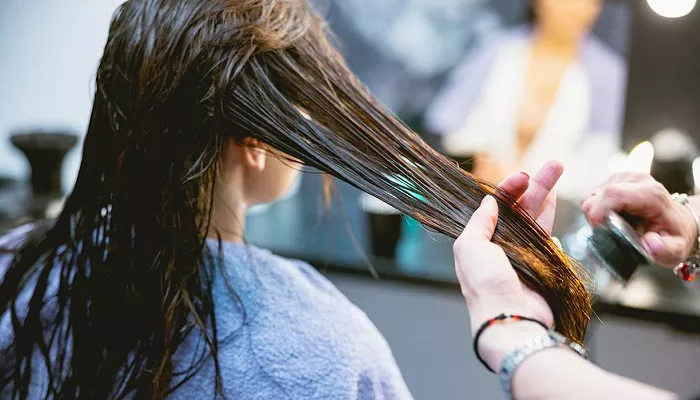Brushing wet hair may seem like a harmless step in your daily beauty regimen, but experts are warning it could be quietly weakening your strands — possibly at a molecular level.
According to Dr. Mehmet Erdogan, hair transplant surgeon and co-founder of Smile Hair Clinic in Istanbul, brushing wet hair can cause significant and lasting damage. “When hair gets wet, it undergoes significant physical changes that can affect its ability to handle stress from brushing,” he explained in comments to Fox News Digital.
Water causes the hair shaft to swell, stretches the cuticle, and leaves it more vulnerable to breakage. Though wet hair may stretch more than dry hair, Erdogan emphasizes this isn’t a sign of strength or resilience — rather, it signals structural fragility. “This stretching damages the internal protein structure, leading to weaker hair over time,” he noted.
The Hidden Risks of Brushing Wet Hair
As the hair swells with water, brushing it puts undue tension on fragile strands. “The brush pulls on swollen, weakened strands, causing them to stretch beyond their capacity. As they dry, they don’t return to their original state and remain damaged,” Erdogan warned.
Hair care professionals are seeing the effects firsthand. “Wet hair is more fragile, and rough brushing can cause breakage,” said Ashley DiMatteo, owner of Ashley Lauren Beauty Lounge in Westchester, New York. She points out that damage is rarely caused by a single habit — it often stems from a combination of factors such as heat styling, stress, hormones, and chemical treatments.
Her colleague Brianna Delvecchio, a color specialist at the salon, added that brushing wet hair with the wrong tools or technique can especially harm chemically treated or fine hair types. “These hair types are already more vulnerable because their protein structure is altered,” she explained.
How to Brush Wet Hair the Right Way
Though brushing wet hair can be risky, it’s not something to avoid entirely — particularly for those prone to tangles. “Brushing is necessary — just do it gently and in the right way,” said Delvecchio.
To minimize breakage, experts recommend the following hair care tips:
Use a wide-tooth comb or a flexible detangling brush. “The flexible bristles are great for detangling without too much tension,” Delvecchio said.
Apply a leave-in product before detangling to soften and hydrate strands, making combing easier and safer.
Start from the ends and work your way up, DiMatteo advised, to avoid dragging knots through the hair shaft.
Allow hair to partially air-dry before combing, especially if you have straight hair, to reduce the risk of damage.
Avoid heat styling wet hair, which Erdogan says can amplify the damage already caused by moisture-swollen strands.
More Than Just Brushing: The Bigger Picture of Hair Health
DiMatteo emphasized that a gentle approach to overall hair care is key. “We talk about scalp health, nutrition, and lifestyle with our clients,” she said. “Everything is connected when it comes to maintaining strong, healthy hair.”
Regular trims, lowering the heat on styling tools, and avoiding overlapping chemical treatments are essential hair care steps that support long-term hair health.
“Hair is delicate,” Delvecchio said. “But with the right habits, it can stay strong and beautiful.”
For anyone uncertain about their routine, DiMatteo encourages open dialogue. “Never feel embarrassed to talk to your stylist — we’re here to help.”
Related Topics:
- The Lazy Girl’s Guide to Healthy Summer Hair
- Growth Bomb Unveils ‘World-First’ Range for Postpartum Hair Loss
- Deep-Conditioning 101: Hair Care Tips for Healthier Strands


